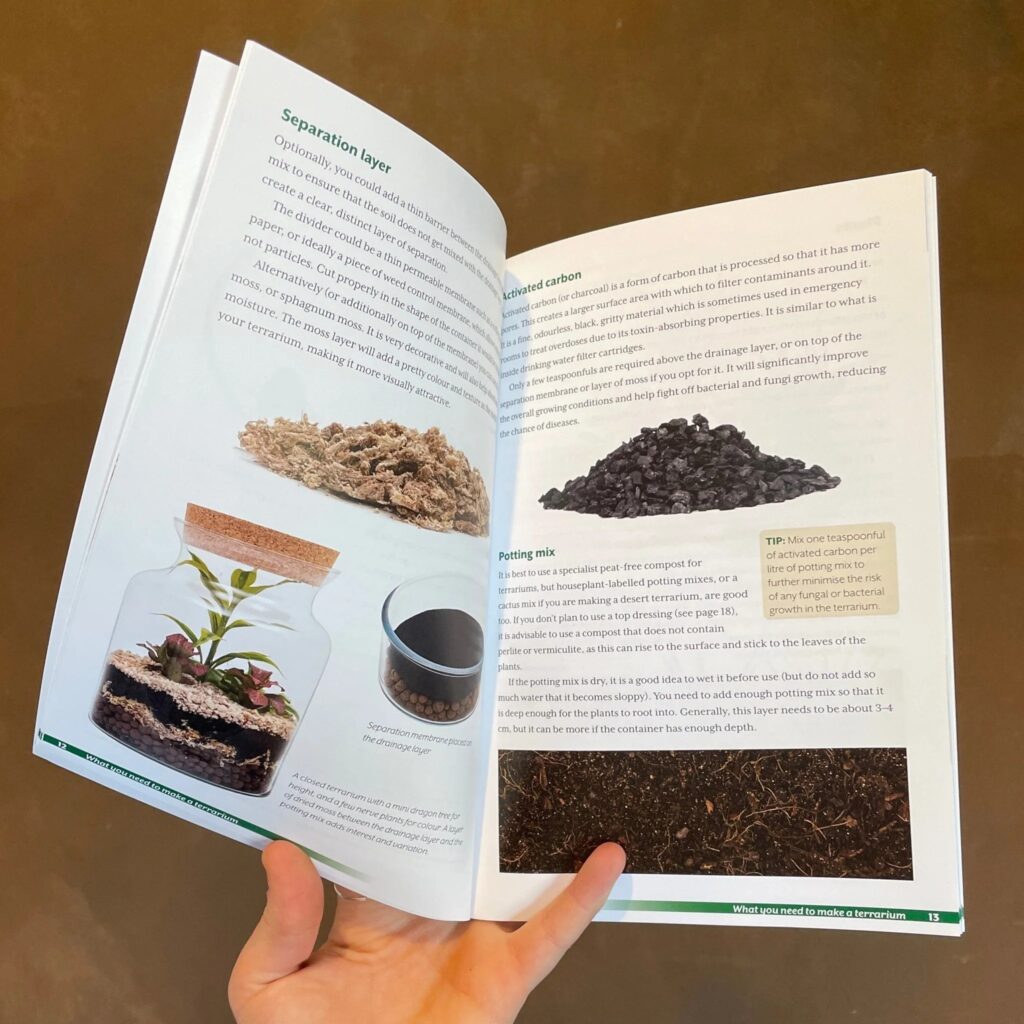
In this article, I’m going to give you some useful tips to help get you started with terrariums. My first tip, and arguably one of the most important, is the choice of plants you use. While some plants love the humidity the terrarium provides, some certainly don’t and won’t last long. As a good rule of thumb, most tropical plants love to grow inside a terrarium as they are from a part of the world that is generally high in humidity. For more information, you can check our article about choosing the right plants.
The second tip is to use a drainage layer where necessary. Also known as a false bottom, this layer provides a place for excess water to sit. If excess water sits in the substrate, it will quickly stagnate and cause the terrarium to die. I recommend using a drainage layer in any terrarium over 500 milliliters. In small terrariums, it’s very easy to control the amount of water in the substrate, making a drainage layer unnecessary. You can use something like pea gravel, which is a cheaper alternative and still works just fine. If you’re on a budget, you could even find rocks from outside; just make sure they’re not too large.
My next tip is the type of soil mix you use, better known as the substrate. This is incredibly important as it’s the lifeline of your terrarium’s health. A good quality soil mix should have the following characteristics: hold humidity, be light and fluffy and resistant to compression, drain well, and provide nutrients for the plants. I’ve used it in over a thousand terrariums and it hasn’t let me down. However, if you’re not able to make this mix yourself, most ready-made terrarium substrates work great. For more information about soil mixtures, you can check out Crafting the Ideal Soil Mix.
This next tip is optional, but it can completely transform the look of a terrarium. When it comes to hardscape, there are endless options that you can use, but in my experience, some are better than others. Most of the rocks and stones won’t cause you any trouble at all, but when it comes to the wood, there are a few things to keep in mind. When adding wood to a terrarium, it’s highly likely it will cause a mold outbreak due to the organic nature of the wood and the high humidity the terrarium provides. This is completely normal and should clear up on its own, but it’s always good to help the terrarium by manually removing it. Like I said earlier, hardscape is optional and you don’t need it to make a healthy terrarium, but by using it, you can really take your terrariums to the next level.
My next tip is to use springtails. They are tiny little helpers that will help keep your terrarium clean and healthy. They do this by eating any mold or decaying matter that they can find. The moss and plants will provide sufficient oxygen for the springtails to survive, and in turn, they will help fertilize the soil. This terrarium is a great example of where springtails would come in handy. You can find springtails at most reptile shops, and they are also widely available online. However, if you use moss you collected yourself from outside, chances are they’re already present.
This next tip is probably one of the most important ones, which is watering. When it comes to watering your plants, you must ensure to avoid overwatering. It’s a good idea to use something like a small spray bottle or a pipette. This allows you to more precisely control the amount of water going inside a terrarium. For example, if I were to water this terrarium, I would open it up and give it a couple of light sprays. That’s it. When watering, it’s much better to underwater than overwater.
This next tip is an important one. It’s the light we use for our terrariums to grow. For this, you have a couple of options: natural light or artificial light, such as LEDs. When using natural light, be sure not to use direct sunlight as the intensified heat will cook the plants inside. Instead, find a bright spot in indirect sunlight. I like to use LEDs due to their consistency. Every couple of weeks, I open up the terrarium and leave the lid off for 5-10 minutes. This lets some fresh air inside the terrarium and provides a good opportunity for me to check up on its general health. If any maintenance is required, I’ll do so accordingly. This isn’t 100% necessary, and you can still have a terrarium thrive without opening it every now and then, but doing so gives you more chance of success and less chance of things like mold outbreaks occurring, which is extremely common in newly set up terrariums.
I hope you found these six tips useful and apply them to your own terrariums. Now, if you want to learn how to make a terrarium from scratch, go to give a read on this link.